Welcome to RRPedia
Your Interactive Resource for EPA RRP Information
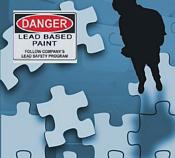 Looking for accurate information about the EPA RRP rule?
Looking for accurate information about the EPA RRP rule?
RRPedia has been created by Shawn McCadden to help remodelers and others affected by the New EPA Renovation Repair and Painting Rule.
Please read RRPedia Use and Contribution Information before using or contributing to RRPedia.
You Can Browse For RRP Topics By Using The Tags List To The Right
Banks And Lenders Are Starting to Find Out About the EPA RRP Rule Too
Posted by Shawn McCadden on Thu, Sep 30, 2010 @ 08:00 AM
RRP Rule Interior Containment General Requirements
Posted by Shawn McCadden on Wed, Sep 29, 2010 @ 08:43 AM
RRP Rule Interior Containment General Requirements:
 The RRP rule requires that dust and debris be controlled in the work area while working in homes built prior to 1978 unless all effected components of the renovation are properly tested and lead is not found. You can find information about the legal definition of lead paint and the accuracy of testing methods here.
The RRP rule requires that dust and debris be controlled in the work area while working in homes built prior to 1978 unless all effected components of the renovation are properly tested and lead is not found. You can find information about the legal definition of lead paint and the accuracy of testing methods here.
In general, renovations that involve only a small amount of paint disturbance create less dust than jobs that involve larger areas of paint disturbance. However, in addition to the size of the area of paint disturbed, the work practices (e.g., sanding) and equipment used will also affect how much dust is created and how the dust migrates. The location of the work activity also has a bearing on the amount of dust that is distributed. For example, small areas of ceiling work can spread dust over the entire room and are very difficult to control.
 Required containment is similar for all jobs, but jobs that generate more dust and debris may require protection of larger areas. While the Rule does not require vertical containment, such systems may be helpful in limiting the size of the area affected by the work and may reduce the area that must be cleaned at the end of the job. Pre-engineered containment systems (purchased and home-made) are very helpful in cutting time spent on the job erecting containment and are easier to install than hanging plastic sheeting with tape. These systems also allow the contractor to create a sealed room within a room where the dust can be completely contained to a limited and controlled area. Click here to download a helpful list of tools and supplies for RRP work.
Required containment is similar for all jobs, but jobs that generate more dust and debris may require protection of larger areas. While the Rule does not require vertical containment, such systems may be helpful in limiting the size of the area affected by the work and may reduce the area that must be cleaned at the end of the job. Pre-engineered containment systems (purchased and home-made) are very helpful in cutting time spent on the job erecting containment and are easier to install than hanging plastic sheeting with tape. These systems also allow the contractor to create a sealed room within a room where the dust can be completely contained to a limited and controlled area. Click here to download a helpful list of tools and supplies for RRP work.
Remember, you are responsible for making sure that dust and debris remain inside of the contained work area. When planning containment, keep in mind how, how much, and where the work practices to be used will create dust, and plan accordingly. This information should also be considered when estimating the cost to do the work.
General requirements for interior containment:
 •Posted signs: These must be posted on all sides of the work area to define the work area, must be in the primary language of occupants, must be posted before the beginning of the renovation, and must remain until cleaning verification is achieved.
•Posted signs: These must be posted on all sides of the work area to define the work area, must be in the primary language of occupants, must be posted before the beginning of the renovation, and must remain until cleaning verification is achieved.If you are looking for forms and signage to help you with comply with the EPA RRP rule, I recommend you check out what The Lead Paint Forms Store has to offer.
Topics: Production Considerations, Estimating Considerations, Work Practices, RRP for Dummies, Containment Considerations, Tools and Supplies
RI RRP regulations differ from the EPA Rule in a few key ways
Posted by Shawn McCadden on Tue, Sep 28, 2010 @ 08:00 AM
Rhode Island RRP Rule
 Rhode Island has been operating a Lead-Safe Remodeler/Renovator Program since 2001 and has licensed over 1,500 Lead-Safe Remodeler/Renovators. In 2010, the Environmental Protection Agency (EPA) created its own Lead-Safe Remodeler/Renovator Program, known as the Lead-Based Paint Renovation, Repair, and Painting Rule. Rhode Island was the first New England state granted authority by EPA to continue its state Remodeler/Renovator program.
Rhode Island has been operating a Lead-Safe Remodeler/Renovator Program since 2001 and has licensed over 1,500 Lead-Safe Remodeler/Renovators. In 2010, the Environmental Protection Agency (EPA) created its own Lead-Safe Remodeler/Renovator Program, known as the Lead-Based Paint Renovation, Repair, and Painting Rule. Rhode Island was the first New England state granted authority by EPA to continue its state Remodeler/Renovator program.
The following information is from the RI Department of Health web site:
Regulated People and Activities
 Rhode Island's RRP Rule applies to contractors, landlords, property managers, homeowners, and anyone else who disturbs painted surfaces on pre-1978 homes or child care facilities. This includes general contractors as well as special trade contractors, such as painters, plumbers, carpenters, and electricians.
Rhode Island's RRP Rule applies to contractors, landlords, property managers, homeowners, and anyone else who disturbs painted surfaces on pre-1978 homes or child care facilities. This includes general contractors as well as special trade contractors, such as painters, plumbers, carpenters, and electricians.
In general, the RI RRP Rule applies to any renovation, repair, or painting that disturbs six square feet or more of paint per room on the interior or 20 square feet or more of paint on the exterior of a pre-1978 house or child care facility. Examples of regulated activities include window replacement, remodeling, repair/maintenance, electrical work, plumbing, painting, carpentry, and any type of demolition.
Not all projects are regulated by the RRP Rule. The chart below details who can do what type of work:
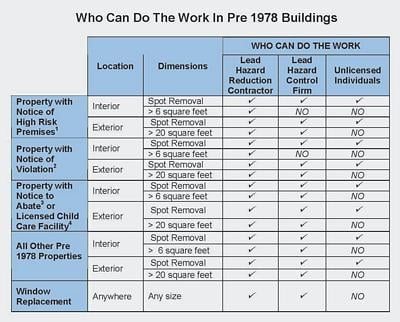
Rhode Island's regulations differ from the federal RRP Rule in a few key ways
• Parents with children younger than six years of age must use a licensed Lead Hazard Control Firm.
• The Lead Hazard Control Firm must submit a Start Work Notification to the Department of Health at least three business days before beginning work.
• A licensed Lead-Safe Remodeler/Renovator must be on site at all times.
• When the work is complete, a clearance inspection by a Rhode Island Certified Environmental Lead Inspector or Technician is required. The clearance inspection must include dust wipe samples analyzed by an approved laboratory. Once acceptable dust levels are achieved, the inspector or technician will issue a Certification of Acceptable Clearance Status.
Exemptions
• Housing built after 1978 and any housing declared lead-free by a Rhode Island Certified Environmental Lead Inspector is generally exempt from Rhode Island's RRP Rule.
• Other exemptions include housing for elderly or disabled persons, studio apartments, and dormitories. These buildings are regulated if a child younger than six years old resides there, or is expected to reside there, for more than two weeks per year.
Requirements
Training
• Contractors, painters, and other workers must complete an eight-hour Lead-Safe Remodeler/Renovator training by a licensed training provider.
Licensing
• Once training is complete, an individual can apply to be a licensed Lead-Safe Remodeler/Renovator.
• All Rhode Island licensed Lead-Safe Remodeler/Renovators must be affiliated with licensed Lead Hazard Control Firms.
• Individuals and firms must renew their licenses every five years after completing a four-hour refresher course. (Note: The fee for firms in RI is only $45.00!)
Start Work & Pre-Renovation Notification
• The firm must deliver a copy of the Rhode Island version of the Renovate Right pamphlet to property owners and tenants no more than 60 days and no less than seven days before work begins.
• The firm must fill out the Pre-Renovation Education form at the back of the pamphlet, have it signed, and keep it for a minimum of three years.
• At least three business days before beginning a job, the firm must submit a Start Work Notification to the Department of Health.
Lead-Safe Work Practices
While work is being performed, Lead-Safe Remodeler/Renovators and their workers must:
• Contain the work area to prevent dust and debris from escaping.
• Refrain from using work methods that generate large amounts of lead-contaminated dust.
• Dry sweeping, using heat guns at temperatures above 1100°F, open flame burning, and using flammable or methylene chloride paint strippers are prohibited.
 When work is complete, Lead-Safe Remodeler/Renovators and their workers must:
When work is complete, Lead-Safe Remodeler/Renovators and their workers must:
• Clean dust and debris using a HEPA vacuum and wet mops.
• Have a Certified Environmental Lead Inspector or Technician conduct a clearance inspection.
• Remove containment barriers upon notification that the dust wipes passed clearance.
Topics: RI Conciderations, Rhode Island RRP Rule, Notification Considerations, Info for Landlords, EPA RRP for Dummies, Work Practices, Work Practice Exclusions
OSHA Left Out Of RRP Rule Development; Just Getting Up To Speed
Posted by Shawn McCadden on Sun, Sep 26, 2010 @ 01:42 PM
OSHA Left Out Of RRP Rule Development, Just Getting Up To Speed.
 On Friday Mark Paskell and I attended a half day LEAD Hazard Awareness workshop sponsored by the MA Division of Occupational Safety and OSHA. (Download the Power Point Presentations) Mark and I agreed we learned quite a bit of new information related to OSHA requirements that apply to RRP related work at the workshop. We have been working on developing training programs and workshops to help renovators become aware of and address OSHA rules. Attending the workshop will definitely help us enhance our future offerings.
On Friday Mark Paskell and I attended a half day LEAD Hazard Awareness workshop sponsored by the MA Division of Occupational Safety and OSHA. (Download the Power Point Presentations) Mark and I agreed we learned quite a bit of new information related to OSHA requirements that apply to RRP related work at the workshop. We have been working on developing training programs and workshops to help renovators become aware of and address OSHA rules. Attending the workshop will definitely help us enhance our future offerings.
At the workshop it became obvious that OSHA and EPA didn’t collaborate on the RRP rule or the content of the required certified renovator training curriculum. It also became obvious at the workshop on Friday that the OSHA reps in attendance were only just recently getting up to speed on the new RRP rule. When answering several attendee questions about OSHA requirements related to RRP work, I could tell the OSHA employees in the room lacked a true understanding of the required RRP work practices. Although the RRP rule went into effect on April 22, 2010 these employees said they had only recently attended any training related to the rule.
 If RRP instructors follow the EPA created instructor training manual when training renovators, they will be teaching students to do things that violate OSHA rules. (Read more here) Will it be an adequate defense if fined by OSHA to defend what you did by referring to the content of the training manual? It appears that the EPA attempted to cover its lack of clarity and understanding of OSHA rules in the training manual by adding this disclaimer where the manual covers the training of non-certified workers by certified renovators; “Note: OSHA rules may require employers to take further steps to protect the health of workers on the job”
If RRP instructors follow the EPA created instructor training manual when training renovators, they will be teaching students to do things that violate OSHA rules. (Read more here) Will it be an adequate defense if fined by OSHA to defend what you did by referring to the content of the training manual? It appears that the EPA attempted to cover its lack of clarity and understanding of OSHA rules in the training manual by adding this disclaimer where the manual covers the training of non-certified workers by certified renovators; “Note: OSHA rules may require employers to take further steps to protect the health of workers on the job”
It’s always easy to find fault, but what we need is solutions. So here are only but a few of my suggestions to EPA and OSHA:
- Rather than use fines and penalties to promote awareness and compliance, use education to help employers and employees identify and understand the health and safety risks of their professions and what laws and regulations they must comply with. Knowing the why often makes the how easier to embrace.
- Rather than promote compliance with just mandatory reporting, paperwork and or fines, offer and require attendance at strategic training classes that not only explain what is required, but also why. The classes could also include training on how to fill out the required reporting forms correctly. Doing so would serve to help complying businesses who do the right things for their workers and customers, only to then get fined due to paperwork errors.
- Allow OSHA and EPA to keep the money collect in fines provided that use of this money is clearly targeted towards developing and supporting education that results in a better educated workforce, improved awareness of related health risks and reducing worker injuries and or illnesses.
- Perhaps our industry could establish standard designations for workers who satisfactorily complete a predetermined curriculum of classes relevant to specific job duties and work environments. This would increase the value employees bring to employers and give employers a simple and standard way to assess the knowledge and or experience of job candidates.
 Current OSHA and RRP related rules and training seems to concentrate on what not to do, without enough time and attention on the right way to do things. With OSHA for example, fall protection rules require a business to put fall protection equipment in place and train workers when and how to use. Great, but why not also complement it with training on methods for working safely and how to avoid putting yourself in a position to fall?
Current OSHA and RRP related rules and training seems to concentrate on what not to do, without enough time and attention on the right way to do things. With OSHA for example, fall protection rules require a business to put fall protection equipment in place and train workers when and how to use. Great, but why not also complement it with training on methods for working safely and how to avoid putting yourself in a position to fall?  For RRP, the required training teaches how to contain dust and debris so it won’t spread outside the contained work area. Might renovators who follow these instructions only be increasing the health risks to workers by containing and concentrating the dust and debris in the confined work area? Wouldn’t it make sense to also train workers on lead-safe work practices that actually limit or prevent the creation of dust to begin with?
For RRP, the required training teaches how to contain dust and debris so it won’t spread outside the contained work area. Might renovators who follow these instructions only be increasing the health risks to workers by containing and concentrating the dust and debris in the confined work area? Wouldn’t it make sense to also train workers on lead-safe work practices that actually limit or prevent the creation of dust to begin with?
If you have suggestions to add to this list please share them here. If some day we have the opportunity to revise these rules and or the strategies used by our government to administer them, we will already have a collection of solutions to consider and offer.
Topics: Worker Training, OSHA Considerations, Health Effects of Lead, MA RRP Updates, OSHA - EPA Challenges, Enforcement and Inspections
CT NARI Chapter Advises Membership How To Report RRP Violations
Posted by Shawn McCadden on Sat, Sep 25, 2010 @ 07:30 AM
CT NARI Chapter Advises Membership How To Report RRP Violations
While at the Remodeling Show last week in Baltimore a CT remodeler shared with me that his local NARI Chapter, The Remodeling Contractors Association of Connecticut, had e-mailed out information to its membership about how to report violations of the RRP Rule to the EPA. The e-mail included a PDF form created by the Region One EPA office as well as a link on the EPA site that could be used to report violations.
 Although every “legal” remodeler I have spoken to expresses concerns about illegal competition doing their work in violation of the RRP rule, these remodelers are split about whether to report their illegal completion or not. At the Opening Session I presented on Thursday morning at the Remodeling Show I offered my point of view on this. I suggested that illegal contractors and the home owners who hire them are stealing business and money away from legal remodelers and their employees. I gave the example that if you or I steal a TV from someone and get caught, we must return the TV and suffer any consequences. If an illegal contractor or home owner steals a deck job from a legal contractor little or nothing is ever done and the home owner gets to keep the deck. How long will our industry and the trade associations that represent us tolerate this? Just like with illegal immigration, because our government does not enforce existing rules and laws on a consistent basis, illegal contractors operate with little fear of being caught and even if caught, have little fear of any consequences.
Although every “legal” remodeler I have spoken to expresses concerns about illegal competition doing their work in violation of the RRP rule, these remodelers are split about whether to report their illegal completion or not. At the Opening Session I presented on Thursday morning at the Remodeling Show I offered my point of view on this. I suggested that illegal contractors and the home owners who hire them are stealing business and money away from legal remodelers and their employees. I gave the example that if you or I steal a TV from someone and get caught, we must return the TV and suffer any consequences. If an illegal contractor or home owner steals a deck job from a legal contractor little or nothing is ever done and the home owner gets to keep the deck. How long will our industry and the trade associations that represent us tolerate this? Just like with illegal immigration, because our government does not enforce existing rules and laws on a consistent basis, illegal contractors operate with little fear of being caught and even if caught, have little fear of any consequences.
The reporting of illegal contractors is every contractor’s choice. In a recent survey I created for Remodeling magazine the following question was asked.
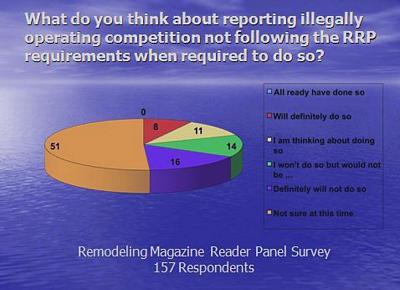
The survey was first sent out to the magazine’s reader panel. 157 people responded to the survey results shown above. The numbers in the pie chart tell an interesting story. Only 16% of those who responded indicated they would not report a contractor operating in violation of the RRP rule. Just over half are still trying to decide.
 As we all wait to see what happens with the economy and how long a real recovery will take, I predict that their ability to pay their mortgage and put food on the family table will persuade many remodeling business owners to take action and defend their ability to run honest businesses.
As we all wait to see what happens with the economy and how long a real recovery will take, I predict that their ability to pay their mortgage and put food on the family table will persuade many remodeling business owners to take action and defend their ability to run honest businesses.
If you would like more information about reporting violations and violators, check out this blog by Mark Paskell of the Contractor Coaching Partnership. Mark even offers to do the reporting for you without divulging your identity.
Topics: Sales Considerations, Legal Considerations, Shawn's Predictions, Enforcement and Inspections, Violation Reports
Home Inspectors Will Help Spread The News About The EPA RRP Rule
Posted by Shawn McCadden on Fri, Sep 24, 2010 @ 08:04 AM
Home Inspectors Will Help Spread The News About The EPA RRP Rule
 If home buyers aren’t aware of lead paint or the implications of buying a property that has or may have lead paint, a good home inspector may likely provide such knowledge.
If home buyers aren’t aware of lead paint or the implications of buying a property that has or may have lead paint, a good home inspector may likely provide such knowledge.
In April this year I did a presentation about lead and the new RRP Rule for the New England Chapter of the American Society of Home Inspectors (ASHI New England). Ironically, the meeting was scheduled for Earth Day, the same day the RRP rule went into effect. At this meeting I informed the inspectors not only about the required EPA RRP lead –safe work practices, but also about the health effects of lead and the required documentation that home owners should receive on completion of a renovation if the property was built prior to 1978. The inspectors were quick to connect the dots between identifying recent renovations and suggesting to the buyer that they ask the seller for a copy of these documents.
In my experience, home inspectors, particularly ASHI members, are typically a very detailed and knowledgeable group of professionals who seek to constantly increase their knowledge. In fact, to maintain their membership in ASHI, members are required to obtain continuing education credits. Home inspectors separate themselves from their completion through their knowledge and expertise and use these advantages to better serve their clients. Home buyers have home inspections performed prior to a purchase as a way to not only identify the condition of a home, but to also identify any health and or safety issues the home may have. Good home inspectors should have knowledge about the EPA RRP rule and will share this information with their clients.
 Home inspectors will help cause compliance with the EPA RRP rule in a few ways. First, they will likely make home buyers aware of the fact that if built before 1978, the home may likely contain lead paint. The only way to verify if lead paint is present is to do a lead test. Inspectors can suggest their clients ask the seller if the home has been tested and if it has to obtain a copy of the required lead inspection report. Next, if the home does have lead, or it hasn’t been tested, inspectors should inform the buyers that any renovations to the home would need to be done using lead-safe work practices. This will have two effects. The first would be to let the buyer know that lead-safe work practices are required should they be planning any renovations after purchasing the home. Second, and most critical, would be to verify that any recent renovations done at the home were done using lead-safe work practices and to verify this by making sure who ever did the work did it in compliance with the EPA RRP requirements. Again, requesting a copy of the required documentation will be the best way a buyer can confirm how such renovations were completed.
Home inspectors will help cause compliance with the EPA RRP rule in a few ways. First, they will likely make home buyers aware of the fact that if built before 1978, the home may likely contain lead paint. The only way to verify if lead paint is present is to do a lead test. Inspectors can suggest their clients ask the seller if the home has been tested and if it has to obtain a copy of the required lead inspection report. Next, if the home does have lead, or it hasn’t been tested, inspectors should inform the buyers that any renovations to the home would need to be done using lead-safe work practices. This will have two effects. The first would be to let the buyer know that lead-safe work practices are required should they be planning any renovations after purchasing the home. Second, and most critical, would be to verify that any recent renovations done at the home were done using lead-safe work practices and to verify this by making sure who ever did the work did it in compliance with the EPA RRP requirements. Again, requesting a copy of the required documentation will be the best way a buyer can confirm how such renovations were completed.
 Additionally, if the work was done by the home owners themselves, or perhaps was done illegally by a non-complaint contractor, the only way to find out if the work may have contaminated the home with lead would be to have the home tested by a licensed lead inspector. This is likely to create heartburn for both the seller and the realtors involved in the sale. Federal disclosure rules about lead require that if a home is tested, the required lead test report must be disclosed to any buyer or anyone planning to rent or lease the property. Failure to do so would result in serious legal liabilities for the seller and also for the realtor should the realtor be aware of the testing. If the seller refuses to allow testing, the buyer may just walk away from the purchase and has the legal right to do so.
Additionally, if the work was done by the home owners themselves, or perhaps was done illegally by a non-complaint contractor, the only way to find out if the work may have contaminated the home with lead would be to have the home tested by a licensed lead inspector. This is likely to create heartburn for both the seller and the realtors involved in the sale. Federal disclosure rules about lead require that if a home is tested, the required lead test report must be disclosed to any buyer or anyone planning to rent or lease the property. Failure to do so would result in serious legal liabilities for the seller and also for the realtor should the realtor be aware of the testing. If the seller refuses to allow testing, the buyer may just walk away from the purchase and has the legal right to do so.
As the above described scenarios take place during real estate transactions, I predict home owners, home buyers and realtors will all become more and more aware of the EPA RRP rule. Each, and for their own reasons, will likely become frustrated and or disappointed. All will share their frustration and disappointment with someone else. Its only human nature to do so. This will result in spreading the word about the EPA RRP rule and will contribute to the reporting of violations and the enforcement of the rule by either the EPA and or those states that have assumed administration and enforcement of the rule.
Topics: Effects of the RRP Rule, Legal Considerations, Shawn's Predictions, Info for Landlords, Lead Test Kits and Testing, Enforcement and Inspections
City Officials Drop The Ball On RRP Rule. Will City Be Fined?
Posted by Shawn McCadden on Thu, Sep 23, 2010 @ 09:22 AM
City Officials Drop The Ball On RRP Rule. Will City of Racine WI Be Fined?
In a September 20, 2010 article by the Racine Post in Wisconsin, the on-line news web site provides a very in-depth report about RRP violations on city financed and managed renovation projects. The article serves to demonstrate and validate the challenges law abiding and conscientious businesses have when trying to work within the RRP rule. A combination of illegally operating contractor competition as well as ineffective, under-funded and or non-existent enforcement has made earning a living challenging for legitimate business owners as well as the employees who work for these businesses.
Wisconsin is one of the states that has assumed administration and enforcement of the EPA RRP Rule. The article reports that Bill Bielefeldt alerted the Wisconsin State Department of Health Services about unsafe lead practices on city-owned homes. Racine's Neighborhood Stabilization Program (NSP) is designed to renovate and sell rundown homes in foreclosure. The article includes a photo gallery of pictures showing a variety of violations at the projects being managed by the city.

Bill Bielefeldt is a housing technician for the city of Racine. He received an award from the Wisconsin Rental Housing Legislative Council for his work on lead-safe practices. (Photo by Racine Post)
Bielefeldt claims the city program meant to improve neighborhoods may be endangering children. "It's embarrassing that the city isn't following its own rules and concerns", Bielefeldt said. "I would be just as much at fault as they are if I didn't report that," he said. "I didn't just go blindside them. I told them about this, and they chose not to do anything."
Now, the city is facing major violations for creating potentially hazardous conditions. The city's response to Bielefeldt? The Racine Post reports the city sent two uniformed police officers to Bielefeldt's Mount Pleasant home just before midnight on Sept. 17 to deliver a letter saying Bielefeldt was prohibited from all of the city's NSP sites.
Here's the letter the city delivered to Bielefeldt just before midnight:
Mr. Bielefeldt;
It has come to my attention that you have been on city-owned property without authorization. Pursuant to your suspension of employment beginning September 10, 2010, you have been relieved of your duties as a Housing Technician as of that date. Be advised that You are not to enter any city-owned property under the control of this department, including but certainly not limited to any homes that are now or are in the future in the Neighborhood Stabilization Program.
Further, you are not to contact any property owners participating in the city's loan program or any related programs, such as downpayment assistance, and you shall not represent yourself as a current City of Racine employee during the course of your suspension and/or upon termination. As was said to you on September 10, 2010, any requests for information from this department must be made directly to me for response.
Failure to comply will result in the city seeking all civil and criminal remedies available to it.
Signed,
Brian F. O'Connell
Director of City Development
------------
I predict we will hear many more stories similar to this one as more contractors become frustrated with illegal completion and the public becomes aware of the dangers of lead paint as well as how the RRP rule will affect them and renovations at their homes.
Topics: Shawn's Predictions, Authorized States, Enforcement and Inspections, Violation Reports
What States Have Taken Over The EPA RRP Rule?
Posted by Shawn McCadden on Thu, Sep 09, 2010 @ 10:38 AM
What States Have Taken Over Administration and Enforcement of The EPA RRP Rule?
Note: This post was updated on 2/28/12 to reflect information available at that time.
The National Center for Health Housing (NCHH) maintains a list tracking the status of RRP for all 50 states to help renovators and training providers. The list includes key links and highlights of rule status for each state as well as American Samoa, Guam, Puerto Rico, U.S Virgin Islands.
As of this post (updated on 2/28/12), the following states are either exploring adoption, are in process or are pending adoption of an RRP rule: District of Columbia, Illinois, Michigan, Minnesota, Missouri, Tennessee, Virginia, California
The following information can be found at the EPA web site. This information was current as of 2/28/12. Click here to check the EPA web site for the most current information.
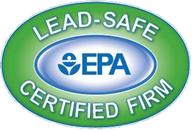
EPA Authorized State Programs
EPA has the authority to authorize states, tribes and territories to administer their own RRP program that would operate in lieu of the EPA RRP regulations. When a state, tribe or territory becomes authorized, contractors and training providers working in these areas and consumers living there should contact the appropriate state, tribal or territorial program office.
The following states have been authorized by EPA: Alabama, Georgia, Iowa, Kansas, Massachusetts, Mississippi, North Carolina, Oregon, Rhode Island, Utah, Washington, and Wisconsin.
Information for States and Tribes
EPA headquarters has developed guidance documents to assist states and tribes that are applying to EPA for authorization to manage their own lead renovation, repair and painting programs (PDF) (122 pp, 257K).
Topics: RRP Questions, EPA RRP Lead Rules, Authorized States, Info for Landlords, RRP for Dummies, Enforcement and Inspections
Property Values and Equity Will Drop as a Result of the EPA RRP Rule
Posted by Shawn McCadden on Tue, Sep 07, 2010 @ 01:26 PM
Property Values and Equity Will Drop as a Result of the EPA RRP Rule
 Home buyers, investors and realtors will likely drive awareness about lead and the new EPA RRP rule up. But, at the same time, such awareness will drive the values of pre-1978 properties down. If unaware of the additional considerations of risks, liability and costs related to the RRP, realtors will likely walk into a hornet’s nest.
Home buyers, investors and realtors will likely drive awareness about lead and the new EPA RRP rule up. But, at the same time, such awareness will drive the values of pre-1978 properties down. If unaware of the additional considerations of risks, liability and costs related to the RRP, realtors will likely walk into a hornet’s nest.
Some home buyers and investors use realtors acting as buyer brokers to assist them when purchasing property. If making buying decisions based on property pricing and the costs related to bringing the properties they purchase up to par with their desires, these buyers will not be happy if they are blindsided by the RRP rule. These buyers will also be very unhappy, and may consider legal options, if they feel their realtor should have advised them about such considerations during the buying process.
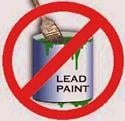 A buyer’s willingness to purchase a property that contains lead will definitely be effected as a result of the RRP rule. First, once word gets out, the health risks of lead paint and related liabilities will cause many buyers to bypass any consideration of pre-1978 properties. As the supply goes up, the prices of these properties will go down. Also, investors won’t like the added costs of owning such properties, particularly if the value of those properties is less likely to increase over time as compared to properties without lead. This too will lower property values to a point where the value of certain properties may only be in the land they sit on, less the cost to get rid of the original lead infused structure.
A buyer’s willingness to purchase a property that contains lead will definitely be effected as a result of the RRP rule. First, once word gets out, the health risks of lead paint and related liabilities will cause many buyers to bypass any consideration of pre-1978 properties. As the supply goes up, the prices of these properties will go down. Also, investors won’t like the added costs of owning such properties, particularly if the value of those properties is less likely to increase over time as compared to properties without lead. This too will lower property values to a point where the value of certain properties may only be in the land they sit on, less the cost to get rid of the original lead infused structure.
As a result of the RRP rule, I predict home sellers and realtors will get into uncomfortable negotiations with buyers, and as a result, even some challenging conversations between themselves. Let’s just say the asking price for a pre-1978 property is $280.000. I picture scenarios where a buyer will make two different offers for that property. One offer will be close to the buyer’s asking price, say $270.000. But, the offer will be conditional upon testing the home for lead to confirm no lead is present. The second offer will be much lower, say $240.000. The second offer will reflect the additional costs and risks the buyer feels they will be assuming if the home does have lead and or the seller isn’t willing to allow testing for lead. In the negotiations, realtors will likely become the punching bag, as buyers and sellers typically never interact, but rather the realtor acts as the middleman. If the seller is first finding out about lead and the RRP as a result of the offer, as mentioned above, that seller might not be happy with their realtor either.
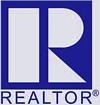 As a side note, realtors as a whole are typically much more professional and proactive than contractors. The majority of them are also dues paying members of one single, well funded and very powerful trade association that represents their interests. I predict that once a good number of realtors catch wind of and understand how the RRP will affect their industry; their association will be working to modify the rule in their favor. This might be of benefit to renovators, but just as easily, it might not.
As a side note, realtors as a whole are typically much more professional and proactive than contractors. The majority of them are also dues paying members of one single, well funded and very powerful trade association that represents their interests. I predict that once a good number of realtors catch wind of and understand how the RRP will affect their industry; their association will be working to modify the rule in their favor. This might be of benefit to renovators, but just as easily, it might not.
Topics: Effects of the RRP Rule, Legal Considerations, Shawn's Predictions, Health Effects of Lead, Info for Landlords
Contractors and Subs Doing EPA RRP Work Will Need to Work Things Out
Posted by Shawn McCadden on Fri, Sep 03, 2010 @ 01:50 PM
Renovators And Their Trade Partners Will Need To Work Out And Agree On Who Will Do What
 Many contractors seeking to comply with the new EPA RRP rule are reporting concerns and challenges about finding trade partners who are willing to operate in compliance. Many renovators have told me that their trade partners have flat out refused to get their businesses and workers certified. Others have said their trade partners have committed to do so but have been slow to get it done due to the related costs. This has become quite an opportunity for some trade partners who have become certified and are marketing their certifications and services to general contractors. Several are actually offering to sub-contract the set-up, containment, demo, clean-up, cleaning verification and all related and required documentation for general contractors.
Many contractors seeking to comply with the new EPA RRP rule are reporting concerns and challenges about finding trade partners who are willing to operate in compliance. Many renovators have told me that their trade partners have flat out refused to get their businesses and workers certified. Others have said their trade partners have committed to do so but have been slow to get it done due to the related costs. This has become quite an opportunity for some trade partners who have become certified and are marketing their certifications and services to general contractors. Several are actually offering to sub-contract the set-up, containment, demo, clean-up, cleaning verification and all related and required documentation for general contractors.
A surprise to me, but also a no-brainer, was one electrician’s comment that he was having problems finding general contractors to work for who were in RRP compliance. Just as general contractors need to find new compliant trade partners to work for them, many trade partners are finding they can no longer rely on the volume of work they got in the past from contractors if those businesses choose to operate illegally.
Liability risks may also drive compliance. Renovators and their trade partners will need to work out and agree on who will do what. Here are a few examples:
-
 Who will take care of the notification requirements and documentation of same before the job begins? Under the rule, either can do so, but the business under contract with the property owner must maintain the required documentation.
Who will take care of the notification requirements and documentation of same before the job begins? Under the rule, either can do so, but the business under contract with the property owner must maintain the required documentation. -
If a trade partner or his employees are not certified renovators, will the renovator take on the responsibility of training and supervising the trade partner and or his employees? If so, at what level of risk? And, will either business’s insurance company allow such a relationship in the future?
-
Who will create the required renovation checklist?
-
Who will make sure the homeowner and or tenant receives a copy of the required renovation checklist after completion of the work?
-
In Massachusetts, who will maintain the required log documenting who comes in and out of the containment area during the course of renovations?
 The first time a RRP fine is accessed for a violation the finger pointing will start, causing one or both businesses to get serious about certification and compliance. The first time a renovator is sued by a client or neighbor as a result of the actions of a trade partner, the tactics used by the lawyers will cause both businesses to have a new and different outlook on RRP compliance, insurance coverage amounts and indemnification clauses. Attorney Mike Sams of Kenney & Sams, P.C., told me that failure of a business to be properly certified under the RRP rule on its own is evidence of negligence should a homeowner or insurance company take the contractor or trade partner to court. Taking this a little further, a contractor hiring a non-certified trade partner might also be considered negligence if that trade partner is allowed to work unsupervised.
The first time a RRP fine is accessed for a violation the finger pointing will start, causing one or both businesses to get serious about certification and compliance. The first time a renovator is sued by a client or neighbor as a result of the actions of a trade partner, the tactics used by the lawyers will cause both businesses to have a new and different outlook on RRP compliance, insurance coverage amounts and indemnification clauses. Attorney Mike Sams of Kenney & Sams, P.C., told me that failure of a business to be properly certified under the RRP rule on its own is evidence of negligence should a homeowner or insurance company take the contractor or trade partner to court. Taking this a little further, a contractor hiring a non-certified trade partner might also be considered negligence if that trade partner is allowed to work unsupervised.
 To confuse matters even further, under their definition of the difference between an employee and an independent contractor, the IRS says that a contractor cannot supervise the work or workers of a sub contractor. Doing so might result in the IRS labeling the sub contractor as an employee. If this were to happen it could trigger addition payroll taxes and workers compensation costs for the general contractor.
To confuse matters even further, under their definition of the difference between an employee and an independent contractor, the IRS says that a contractor cannot supervise the work or workers of a sub contractor. Doing so might result in the IRS labeling the sub contractor as an employee. If this were to happen it could trigger addition payroll taxes and workers compensation costs for the general contractor.
Topics: Effects of the RRP Rule, Production Considerations, Subcontractor Considerations, Legal Considerations, Shawn's Predictions, Insurance Considerations, Notification Considerations, Compliance Options, Documentation Considerations, MA RRP Lead Rules, Enforcement and Inspections

 Banks have started to figure out that the costs and liabilities related to the EPA RRP rule can dramatically increase their costs and risks. Banks that own foreclosed properties have quickly discovered the additional costs they will incur when repairing and or renovating these properties just so they can sell them. Under the RRP rule, landlords need to become certified firms and use certified renovators when working on their properties. Banks who take possession of pre-1978 properties need to do the same and or only hire certified firms to perform the work for them. As a result of the RRP rule, many pre-1978 foreclosed homes are now worth less than they were valued prior to the April 22, 2010 date the new EPA RRP rule took effect.
Banks have started to figure out that the costs and liabilities related to the EPA RRP rule can dramatically increase their costs and risks. Banks that own foreclosed properties have quickly discovered the additional costs they will incur when repairing and or renovating these properties just so they can sell them. Under the RRP rule, landlords need to become certified firms and use certified renovators when working on their properties. Banks who take possession of pre-1978 properties need to do the same and or only hire certified firms to perform the work for them. As a result of the RRP rule, many pre-1978 foreclosed homes are now worth less than they were valued prior to the April 22, 2010 date the new EPA RRP rule took effect.  Banks are also more likely to end up with additional foreclosed properties due to the RRP rule. For struggling pre-1978 homeowners and investors, perhaps already upside-down on their mortgages, the additional repair and maintenance costs related to the EPA RRP rule may be just one more reason to justify letting their properties go to foreclosure. Finding out about the potential additional drop in equity value in the property due to the EPA RRP rule may become a second reason to let upside down properties go to foreclosure.
Banks are also more likely to end up with additional foreclosed properties due to the RRP rule. For struggling pre-1978 homeowners and investors, perhaps already upside-down on their mortgages, the additional repair and maintenance costs related to the EPA RRP rule may be just one more reason to justify letting their properties go to foreclosure. Finding out about the potential additional drop in equity value in the property due to the EPA RRP rule may become a second reason to let upside down properties go to foreclosure. As mentioned above, banks have already started to become aware of the EPA RRP rule due to foreclosures. They are also using this knowledge when considering loans. If loaning money to home buyers for purchases and or to property owners for renovations, banks will likely want to know if a pre-1978 property contains lead and if it does how it might affect the value of the home. A home needing significant repairs or maintenance after purchase will likely have a much lower value if the work will fall under the EPA RRP rule. Such scenarios might have a few different effects ranging from requiring more money down, higher interest rates, lower appraised value of the property as compared to the selling price and or ultimately denying to loan money on the property.
As mentioned above, banks have already started to become aware of the EPA RRP rule due to foreclosures. They are also using this knowledge when considering loans. If loaning money to home buyers for purchases and or to property owners for renovations, banks will likely want to know if a pre-1978 property contains lead and if it does how it might affect the value of the home. A home needing significant repairs or maintenance after purchase will likely have a much lower value if the work will fall under the EPA RRP rule. Such scenarios might have a few different effects ranging from requiring more money down, higher interest rates, lower appraised value of the property as compared to the selling price and or ultimately denying to loan money on the property. 


